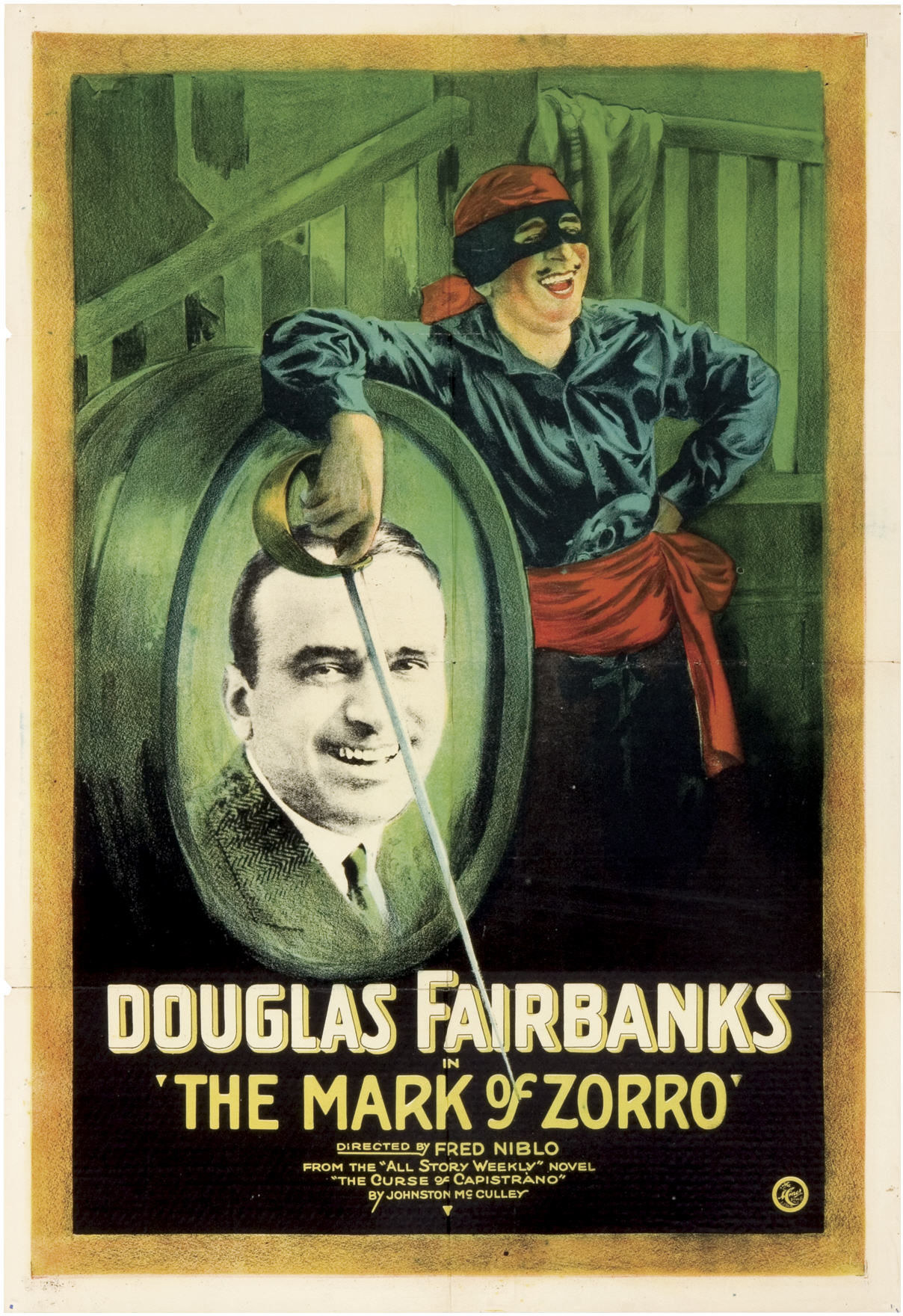The Mark of Zorro (1920)
 The story of the masked, black wearing swashbuckler comes to life for the first time as Douglas Fairbanks brings you The Mark of Zorro. Little do you know that this single film carries a huge impact on the world of filmmaking like never before. To this very day you can thank this film for what you see in your local cinema for this film and the man in the leading role helped change the face of movies and movie stars.
The story of the masked, black wearing swashbuckler comes to life for the first time as Douglas Fairbanks brings you The Mark of Zorro. Little do you know that this single film carries a huge impact on the world of filmmaking like never before. To this very day you can thank this film for what you see in your local cinema for this film and the man in the leading role helped change the face of movies and movie stars.First a little back story on the man that is Douglas Fairbanks., for those who may not know him, or those that know the name, but don't understand his importance. Fairbanks was perhaps the beginning of what we see on shows like Entertainment Tonight or Access Hollywood, for you see he was "Hollywood Royalty." His affair and eventual marriage to famous actress Mary Pickford was highly covered by the press during that time. His relationship and his persona made him a hot commodity in Hollywood and mega star. (I mean look at the movie poster for Zorro, his publicity shot is on it for crying out loud.) Also, he along with Pickford, Charlie Chaplin, and director W.D. Griffith formed one of the greatest alliances in Hollywood history forming United Artist in 1919, a movie studio made by the talented filmmakers to serve the art of making good films without the businessmen getting in their way. This meant they had full creative control and reaped all the profits. Smart business, huh? You get the business' highest regarded director, biggest comic star, and its greatest power couple, which include America's sweetheart and greatest action hunk together under one umbrella. An amazing thing. And the Mark of Zorro would be the first release under this new company.
As for Zorro, based on the story The Curse of Capistrano, published first as a serialized story in the pulp magazine All-Story Weekly in 1919. Fairbanks' interpretation would be how all Zorro productions would be based on as it would be the first visual form of the masked hero. Fairbanks' huge, unmistakable smile has become as part of the character as his famous "Z" marking he leaves as his calling card. It is here where he can mark the birth of the swashbuckling hero types in Hollywood film, as well as the beginning of a budding genre that would slowly evolve into the superhero genre. I found in watching the film that I saw many nuances that reminded me of the character of Batman, like the hidden cave (or batcave if you will) that led to Zorro's hideout and the duel lives of the wealthy Don Diego Vega and masked Zorro (Bruce Wayne and Batman). It wasn't until my research afterwords that I found Batman was created years later (1939) and its creator, Bob Kane, credited the Zorro character as the influence for Batman. It is rather plain to see.
As for the plot of this movie, you very much have the idea of what it is. Don Diego moonlights as the masked Zorro to right the wrongs in his Spanish California town. With his rather uninteresting and drab character as Don Diego, no one is the wiser of his true self being a dashing, clever hero of the people. Very Robin Hood-like, wouldn't you say? (spoiler for Fairbanks future film) Don Diego's love interest is Lolita Pulido, who is much more interested in Zorro, which pleases Diego/Zorro very much as Zorro is his true self. Lolita's family is jailed by the evil forces of the Governor Alvarado, but Don Diego reveals his true identity as Zorro and saves the day winning over his lovely Lolita as she is delighted to find out Diego's true self.
You can't help but notice the similarities the film has with all sorts of superhero pictures (i.e. Spiderman, Batman, Superman), but this picture was by far well before they where even ideas in their creators heads. Also this marks the beginning of dashing heroes that Fairbanks was so notable for. His energy and athleticism was remarkable, and would hurt him as he would age, but it was films like this that made him immortal in Hollywood's golden age.
.jpg)
.jpg)
Comments
Post a Comment